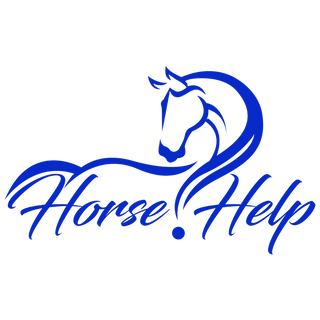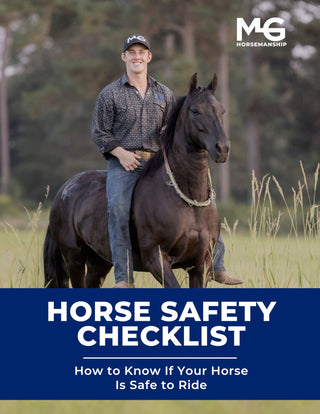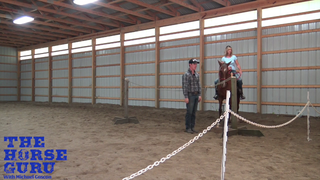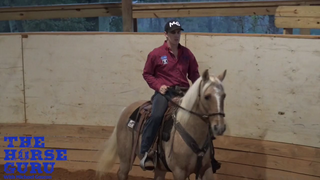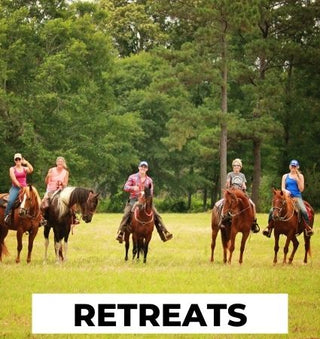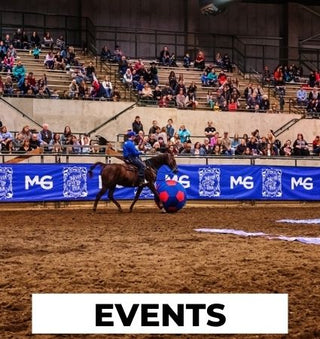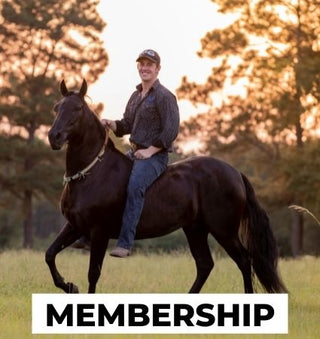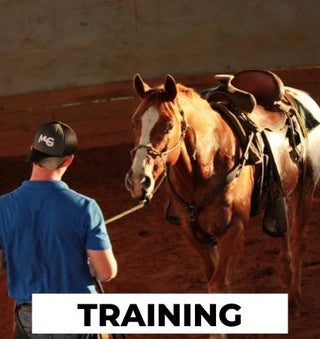Watch the Video Here or continue reading below!
Every great relationship—especially with your horse—starts on the ground. In this session, we follow a young Off The Track Thoroughbred through a progressive training system designed to build respect, connection, and confidence. This method, rooted in pressure and release and a clear grading system (from preschool to 12th grade), helps both horse and rider advance together with patience and purpose.
Why Groundwork Is Everything
All problems start on the ground—and so do the solutions.
Whether you’re dealing with disrespect, fear, pushiness, or lack of control, groundwork is the key to unlocking a better bond. This training system introduces structured steps that prepare your horse for under-saddle work by developing trust and attentiveness from the very beginning.
Step 1: Preschool – Establishing Personal Space and Respect
Goal: Teach the horse to recognize your space, stay out of your bubble, and respond to basic cues.
-
Start with round pen work to establish movement and attention.
-
Use light pressure and a knotted halter to direct the horse’s movement.
-
If the horse enters your space without being invited, correct it immediately.
-
Keyword focus: groundwork training, horse personal space, respectful horse behavior
"I weigh 150 pounds, and he weighs over 1,100. He needs to respect my space on my terms." — Trainer
Step 2: Kindergarten – Learning to Yield and Respond to Pressure
Goal: Introduce halter pressure, downward cues, and backing.
-
The sensitive part of the horse’s nose is engaged with a halter knot.
-
Use gentle, consistent pressure to teach backward motion and yielding.
-
Back up every cue with the least amount of pressure first—then increase gradually if needed.
-
Keyword focus: horse halter training, teaching a horse to back, natural horsemanship pressure release
Step 3: First Grade – Movement Control and Body Awareness
Goal: Begin shoulder control and basic movement around the handler.
-
Stand at the shoulder, step forward, and redirect the horse’s shoulder out of your space.
-
Begin circling exercises where the horse looks at you, respects your space, and stays calm under pressure.
-
Focus on attention and non-verbal cues.
-
Keyword focus: shoulder control in horses, respect training for horses, lunging with respect
Step 4: Second Grade – Desensitization With Simple Tools
Goal: Desensitize the horse using lightweight objects like tarps.
-
Use tarps to simulate trail or obstacle pressure.
-
Begin slowly and let the horse investigate with its nose.
-
Correct only if the horse ignores or pushes through your space.
-
Keyword focus: horse desensitization, how to use tarps for training, trail obstacle training for horses
Step 5: Third Grade – Introducing Pressure Over Obstacles
Goal: Build bravery and leadership with obstacles.
-
Approach obstacles with calm confidence—do not force or rush.
-
Allow the horse time to process before asking it to proceed.
-
Always release pressure the moment the horse makes progress in the correct direction.
-
Keyword focus: horse obstacle training, teaching a horse to trust, trail obstacle horse training
"Set your horse up for success. Don’t wait until you’re out on the trail to train." — Trainer
Step 6: Fourth Grade – Under Saddle Readiness
Goal: Confirm that your horse is mentally and physically prepared for riding.
-
Confirm respect, softness, and calmness from the ground first.
-
Only mount once all pre-riding grades are passed.
-
For young or reactive horses, simulate mounting several times before actually riding.
-
Keyword focus: colt starting, preparing a horse for riding, riding readiness in horses
Mountain Prep: How to Start a Young or Nervous Horse
Goal: Use softness and feel to mount without triggering fear or resistance.
-
Keep the horse’s head turned toward you.
-
Touch the body and stirrup areas before stepping up.
-
Use a saddle that offers security and support—don’t sacrifice safety for style.
-
Keyword focus: colt starting process, safe horse mounting, young horse training
The Importance of Steering Control
Analogy: Just like a car, you wouldn’t drive without a functioning steering wheel.
-
If you don’t have reliable control over your horse’s head, you shouldn’t be riding.
-
The ability to disengage the hindquarters and redirect the head ensures you can manage any unexpected situation.
-
Keyword focus: steering a horse, horse control exercises, head control training
Final Tip: Pressure and Progress Go Hand in Hand
-
Every horse has its own threshold for pressure.
-
Never punish curiosity or caution—instead, guide it.
-
You can still progress with a nervous horse if they stay still and look to you for answers.
-
Keyword focus: pressure and release horse training, calm nervous horse, confident horse trainer
Conclusion: Leadership Builds Trust
By approaching each session with calm leadership and a clear system, you set your horse up for long-term success. From groundwork to obstacles, each step builds a respectful bond that results in a more confident, connected, and willing partner—whether on the trail or in the arena.
“Work the horse you have today, not the one you wish you had.”
